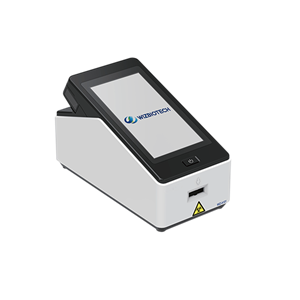The evaluation for Gastrointestinal bleeding
Gastrointestinal bleeding is a common clinical syndrome that can be caused by a variety of diseases, such as peptic ulcer, inflammatory bowel disease, diverticula, hemorrhoids, colon polyps, rectal prolapse, vascular abnormalities in the digestive tract and malignant tumors. Acute gastrointestinal hemorrhage can be life-threatening, and chronic blood loss can produce symptoms of anemia. Therefore, in the face of gastrointestinal bleeding, it should be analyzed and treated in time:
1. Determine whether it is gastrointestinal bleeding?
The upper gastrointestinal bleeding, as to its high position, if hematemesis occurs right after bleeding, the blood will be bright red; If the blood stays in the stomach for a period of time and vomited out after the effect of stomach acid, it will be as brown as grounded coffee, the faeces is as black as tar, and the it also will be dark red when bleeding a lot; The lower digestive tract bleeding is caused by intestinal lesions, and the higher bleeding site, the darker color faeces; The lower bleeding site, the brighter red color of the faeces or even lifeblood, but it needs to be carefully to identify if it is a large amount of upper gastrointestinal bleeding or hemorrhoid bleeding.
2. Determine where the bleeding site is?
The manifestations of gastrointestinal bleeding are closely related to the site of bleeding, the amount of bleeding, and the length of time that the blood stays in the digestive tract.
Clinical manifestation | Consider the possibility of upper gastrointestinal bleeding | Consider the possibility of lower gastrointestinal bleeding |
Hematemesis | Almost certainly | Rare possibility |
Melena | Very likely | Possible (when bleeding amount is not big and/or the blood stays in the intestines for a long time) |
Hematochezia | Possible (heavy bleeding, rapid bleeding, and/or blood in the digestive tract | In all probability |
Bloody stool | Short residence time | Almost certainly |
Fecal occult blood | Rare possibility | Probably |
3.Assess the amount of blood loss
5-10ml | Occult blood test can be positive |
50-100ml | Black stool (or tarry stool) |
250-300ml | hematemesis |
400-500ml (one bleed) | Systemic symptoms may appear, such as dizziness, flustered, fatigue, etc |
Over 1000ml | Fatigue, etc. |
4.Whether there is active bleeding
Patients with the following signs may hint active bleeding: persistent hematemesis, black faeces, blood faeces, active bowel sounds, continuous hemoglobin decline, increased blood urea nitrogen, and unstable circulation, which can be confirmed by endoscopy/angiography/enhanced CT/ nuclide scan. After clarifying the above problems, combined with the patient's medical history, physical examination and emergency examination results, clinical risk classification can be performed before endoscopy, to determine whether endoscopic examination is necessary and the intensity of treatment in the later stage.
low-risk | Moderately dangerous | High risk | |
Age | < 60 | > 60 | > 60 |
Systolic blood pressure | > 100 | < 100 | < 80 |
(mmHg) | Normal | > 100 | > 120 |
Pulse (times/min) | < 500 | 500-1000. | > 1500 |
Blood loss (ml) underlying disease * | No | No | Yes |
Hb (g/L) | Normal | 70-100. | < 70 |
Symptom | Giddy | Fainting, thirsty | Cold limbs, disorder of consciousness |
Wizbiotech, as a POCT company deeply engaging in the field of digestive tract for more than 10 years, provides fecal occult blood test kit, which can detect fecal hemoglobin and evaluate the intestinal bleeding for patients, it is used for the auxiliary diagnosis for colorectal cancer and precancerous lesions (polyps, adenomas, inflammatory bowel diseases, etc.). It is safe, reliable and affordable, and is also a trustworthy brand at home and abroad. If you are interested in our products, please contact our sales for further information.




